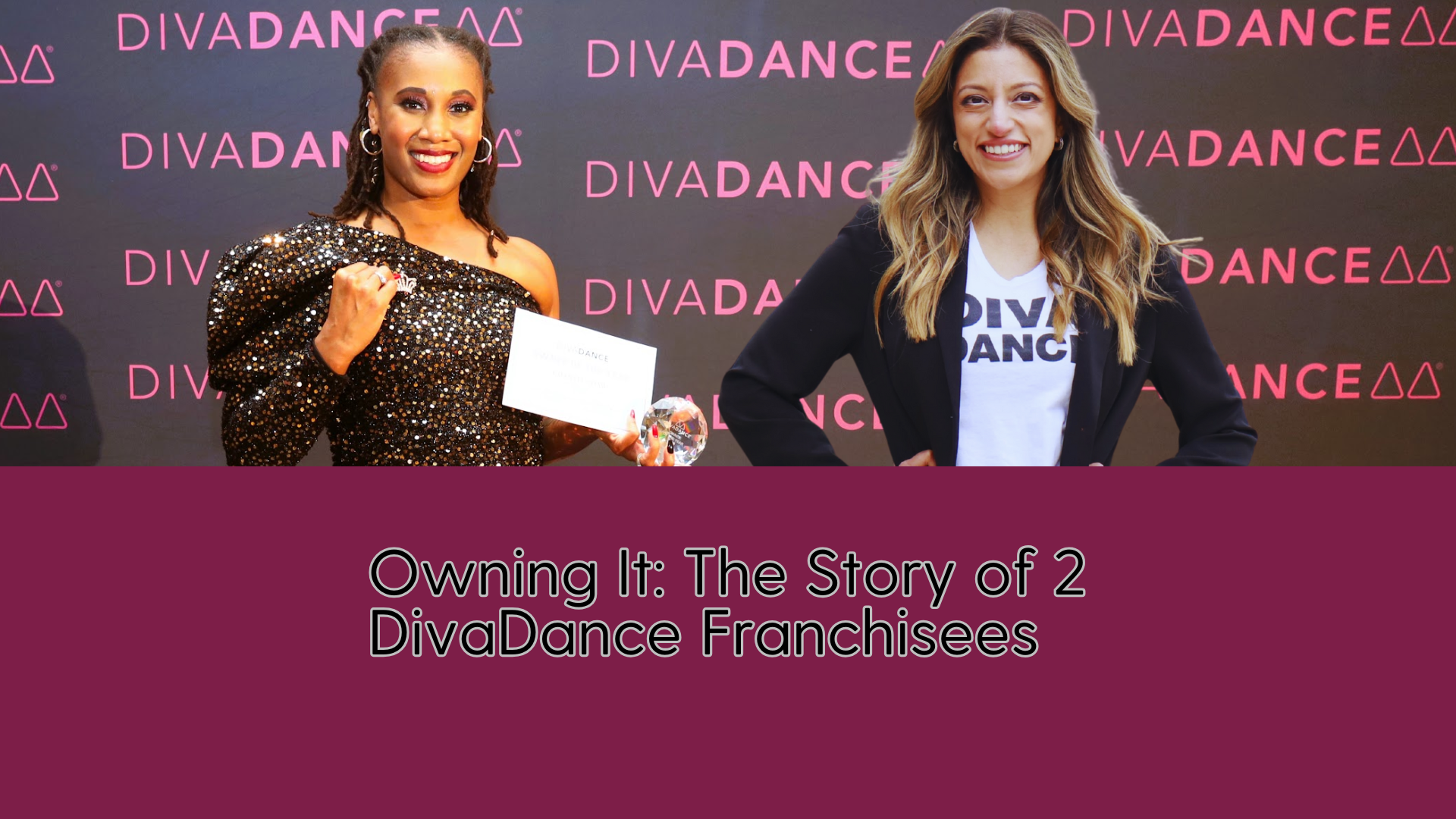
How Two DivaDance Owners Funded Their Franchises: Real Money Talk from Sandy Springs & Naperville
Chantel Shaw (Sandy Springs, GA) and Ariel (Naperville, IL) sat down for National Entrepreneur Day to share exactly how they funded their DivaDance studios—from community fundraisers to strategic credit, SBA loans to retirement rollovers. If you've ever wondered, "Can I actually afford this?" this is the conversation you need.
Watch: The Full Funding Breakdown (42 Min)
Hear Chantel (2024 Owner of the Year) and Ariel reveal:
- How Chantel funded her studio with community support + creative financing
- Why Ariel's "fund as you go" strategy worked for her Chicago suburb launch
- The exact moment both owners knew they could actually do this
- What they wish they'd known about working capital before opening
On National Entrepreneur Day 2025, DivaDance founder Jami Stigliano hosted a candid conversation that most franchise brands would never air publicly: how do real people actually pay for this?
Two franchise owners, Chantel Shaw from DivaDance Sandy Springs (Atlanta's north metro) and Ariel from DivaDance Naperville (Chicago's western suburbs), broke down their funding strategies, early mistakes, and what they'd do differently. No sugarcoating. No "we had unlimited capital" stories. Just two women who made it work with hustle, creativity, and a willingness to bet on themselves.
If you're researching how to fund a fitness franchise, or specifically wondering about DivaDance franchise costs and whether you can realistically swing it, this is your roadmap.
Meet the owners: Sandy Springs & Naperville
Chantel Shaw | Sandy Springs, GA (Atlanta Metro)
Background: Former DivaDance instructor who fell in love with the member transformations she witnessed. Went from teaching classes to owning the studio.
Funding path: Community fundraising, business credit cards, and strategic partnerships. Chantel leaned into her local network in Sandy Springs to bootstrap initial costs, then built revenue to fund expansion.
Current status: 2024 DivaDance Owner of the Year. Now mentoring new franchisees on staff development and community building.
Ariel | Naperville, IL (Chicago Suburbs)
Background: First-time business owner who discovered DivaDance as a member. Saw the gap in Naperville's market for adult dance experiences and took the leap.
Funding path: Personal savings combined with business credit and a "fund as you go" philosophy—reinvesting early revenue to avoid overleveraging before proving the model.
Current status: Just completed year one. Already exploring second territory expansion in the Chicago area.
The real funding playbook: 5 strategies DivaDance owners actually use
Here's what came up in the webinar—and what we're hearing from owners across markets like Denver, Miami, Seattle, Indianapolis, Cleveland, and Cincinnati:
1. SBA 7(a) Loans: The Most Common Path
How it works: Small Business Administration-backed loans reduce lender risk, making it easier to qualify. You'll typically need 10–30% down and a solid business plan.
Timeline: 45–90 days from application to funding (pre-qualification can happen in weeks).
Best for: Owners with decent credit who want to preserve cash for working capital and avoid depleting personal savings.
Pro tip from the webinar: Both Chantel and Ariel emphasized the importance of working capital—don't just fund the build-out. You need 6–9 months of operating cushion for marketing, payroll, and the inevitable surprises.
2. ROBS (Rollover for Business Startups): Use Retirement Funds Without Penalties
How it works: Roll eligible 401(k) or IRA funds into a new business without triggering taxes or early withdrawal penalties. Often combined with SBA loans to reduce cash requirements.
Best for: Owners with retirement accounts who want to self-fund a portion without taking on 100% debt.
Watch out: Your retirement funds become tied to business performance. Not for everyone, but powerful when used strategically.
3. Business Credit Cards: Bridge Financing (Use Carefully)
What both owners said: Business credit cards helped cover unexpected costs during launch—especially marketing pushes and equipment needs that popped up before revenue kicked in.
The strategy: Open cards with 0% intro APR periods. Pay them down aggressively once membership revenue stabilizes.
The warning: Don't use credit as a replacement for proper capitalization. It's a tool, not a foundation.
4. Community Fundraising: Chantel's Secret Weapon in Sandy Springs
Chantel did something most franchise owners never consider: she hosted fundraising events before she opened. Dance-a-thons, community previews, and founding member packages—she built demand and capital simultaneously.
Why it worked: Sandy Springs has a tight-knit community culture. Chantel tapped into local pride and people's desire to support women-owned businesses.
Can this work in your market? Depends. Suburbs and mid-sized metros with strong neighborhood identities (such as Naperville, IL; Carmel, IN; Scottsdale, AZ; or Bellevue, WA) respond well to grassroots launches.
5. Start Lean, Scale Smart: Ariel's "Fund as You Go" Philosophy
Ariel's approach in Naperville: don't overcommit to space or staff until you've proven demand. She launched with a tight class schedule, converted trials to memberships fast, then reinvested that revenue to expand offerings.
Key insight: "I didn't want to be stuck paying for 10 instructors when I only needed 3. I grew as the members came in."
Result: Lower financial stress, higher cash flow discipline, and a business model that's already preparing for unit two.
What they wish they'd known about DivaDance franchise costs
The webinar got real about the money mistakes. Here's what both owners flagged:
"Budget more for working capital than you think." —Chantel
"Your first 90 days will cost more than your spreadsheet says. Marketing, hiring, and retention tools add up fast. Have a buffer."
"Don't underestimate the power of local partnerships." —Ariel
"In Naperville, partnering with boutique gyms, wellness centers, and even corporate HR departments drove trials without blowing my ad budget."
"You'll spend money you didn't plan on. Plan for that." —Both
"Surprise repairs, last-minute permits, emergency instructor coverage—entrepreneurship has a tax. Budget 10–15% contingency on top of your pro forma."
Is DivaDance right for you? The honest assessment
Both owners were clear: this isn't passive income. It's not "hire a manager and walk away." At least not in year one.
You'll thrive if you:
- Want to build something meaningful in your community (both owners talked about members crying at class—this is transformation work)
- Are comfortable leading a team (instructors, front desk, eventually a manager)
- Can handle inconsistent cash flow for 6–12 months (trials convert, but it takes time to build recurring revenue)
- Love local marketing and showing up in your neighborhood
- Don't need dance experience (neither owner came from a dance background—passion for the concept matters more)
This isn't for you if:
- You want a franchise you can manage remotely from day one
- You're risk-averse with zero tolerance for financial volatility
- You expect immediate profitability (both owners emphasized patience and reinvestment in the early phase)
Where we're expanding: markets like Sandy Springs & Naperville
We're talking to entrepreneurs in metros with strong adult fitness demand, walkable suburbs, and communities that value connection. Current focus areas:
Your market not listed? We're evaluating territories nationwide. Ask about availability.
Your next steps: from webinar to franchise owner
- Watch the full webinar above. Hear the unfiltered conversation—including the hardest parts of ownership both owners called out.
- Request the Franchise Disclosure Document (FDD). This has the real numbers: Item 7 (estimated initial investment), Item 19 (financial performance), and what owners are actually making.
- Talk to owners in markets like yours. The brand will connect you with franchisees in similar demographics. Ask about funding, ramp-up, and breakeven timelines.
- Get pre-qualified for financing. Whether SBA, ROBS, or another path, knowing your buying power clarifies what's possible.
- Visit a studio in person. See the experience. Talk to members. Watch the community vibe. If it doesn't resonate with you, it won't work.
Frequently Asked Questions: DivaDance Franchise Funding & Ownership
How much does a DivaDance franchise cost?
Total investment typically ranges from $150K–$300K, depending on location, build-out needs, and market size. This includes franchise fee, construction, equipment, initial marketing, and working capital. Request the FDD for a detailed Item 7 breakdown.
Do I need dance experience to own a DivaDance franchise?
No. Both Chantel and Ariel emphasize that ownership is about leadership, marketing, and operations—not teaching dance. You hire instructors for that. Passion for the concept and community-building matter more than dance skills.
Can I use my 401(k) to fund a DivaDance franchise?
Yes, through a ROBS (Rollover for Business Startups) structure. This lets you use retirement funds without taxes or penalties. Many owners combine ROBS with SBA financing to reduce out-of-pocket cash requirements. Work with a qualified provider to set this up correctly.
How long until a DivaDance franchise is profitable?
Varies by market, but both owners in the webinar said 12–18 months to reach consistent profitability. Early months focus on trial-to-membership conversion and building recurring revenue. Working capital for the first 6–9 months is critical.
What credit score do I need for SBA franchise financing?
Most SBA lenders look for 680+ for approval, though some will work with 650+ if other factors (down payment, experience, cash reserves) are strong. Get pre-qualified early to understand your options.
Can I open multiple DivaDance locations?
Yes. Ariel is already exploring territory #2 after one year. Multi-unit ownership is possible once you build a manager-led model in your first location. Many owners start with one, prove it, then scale.
Is Sandy Springs or Naperville still available?
Chantel owns Sandy Springs, and Ariel owns Naperville, but nearby territories may be open. Check current territory availability here.
Where can I watch the full webinar?
Scroll up—it's embedded on this page. The full 42-minute conversation covers funding, daily operations, challenges, and advice for new owners.
Ready to explore DivaDance ownership?
Talk to the franchise team. Get territory info. See if your market is open.
Start the ConversationDISCLAIMER: This advertisement is not an offer to sell a franchise. A franchise offering can only be made through each brand's Franchise Disclosure Document (FDD) and, if required, only after they have registered or qualified in the applicable state.
